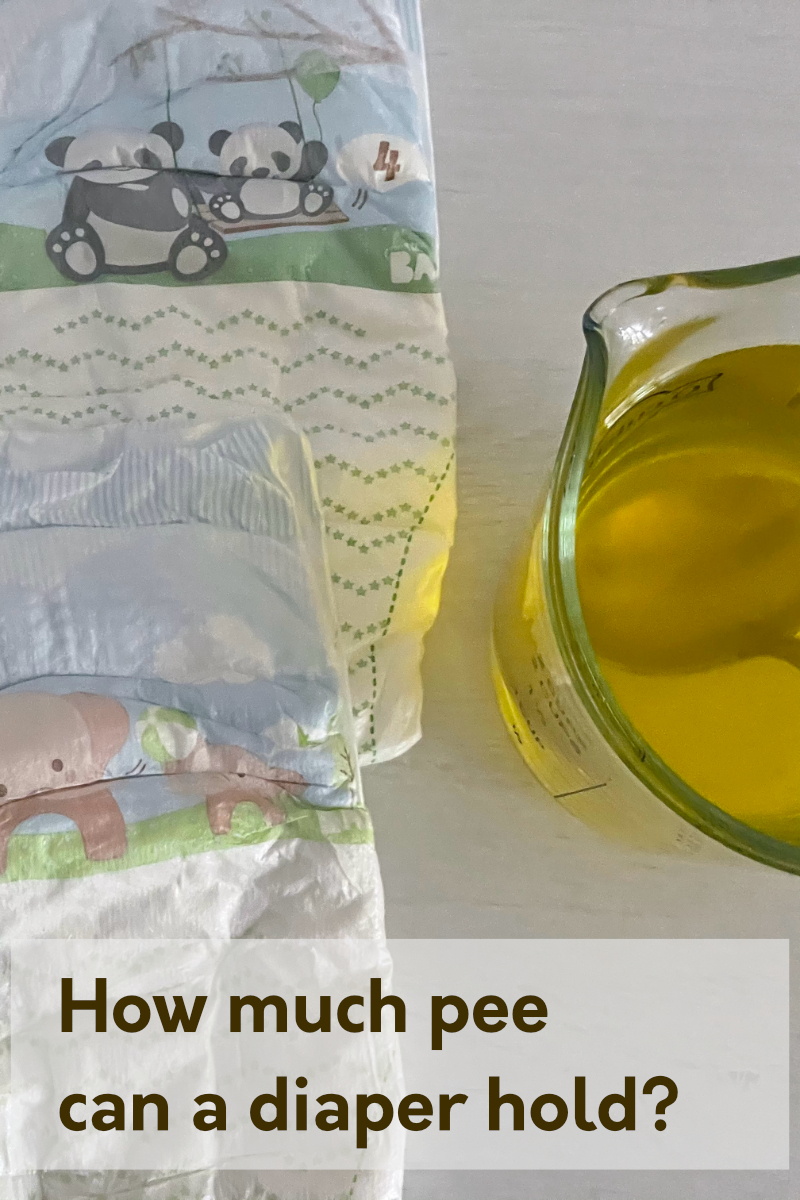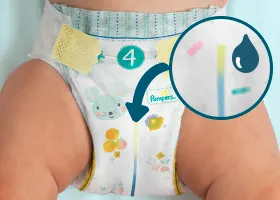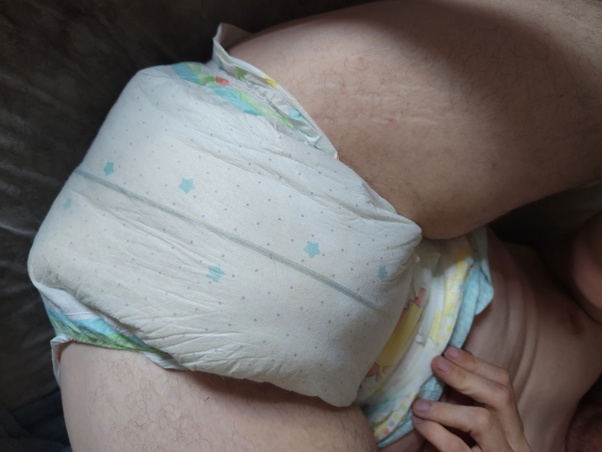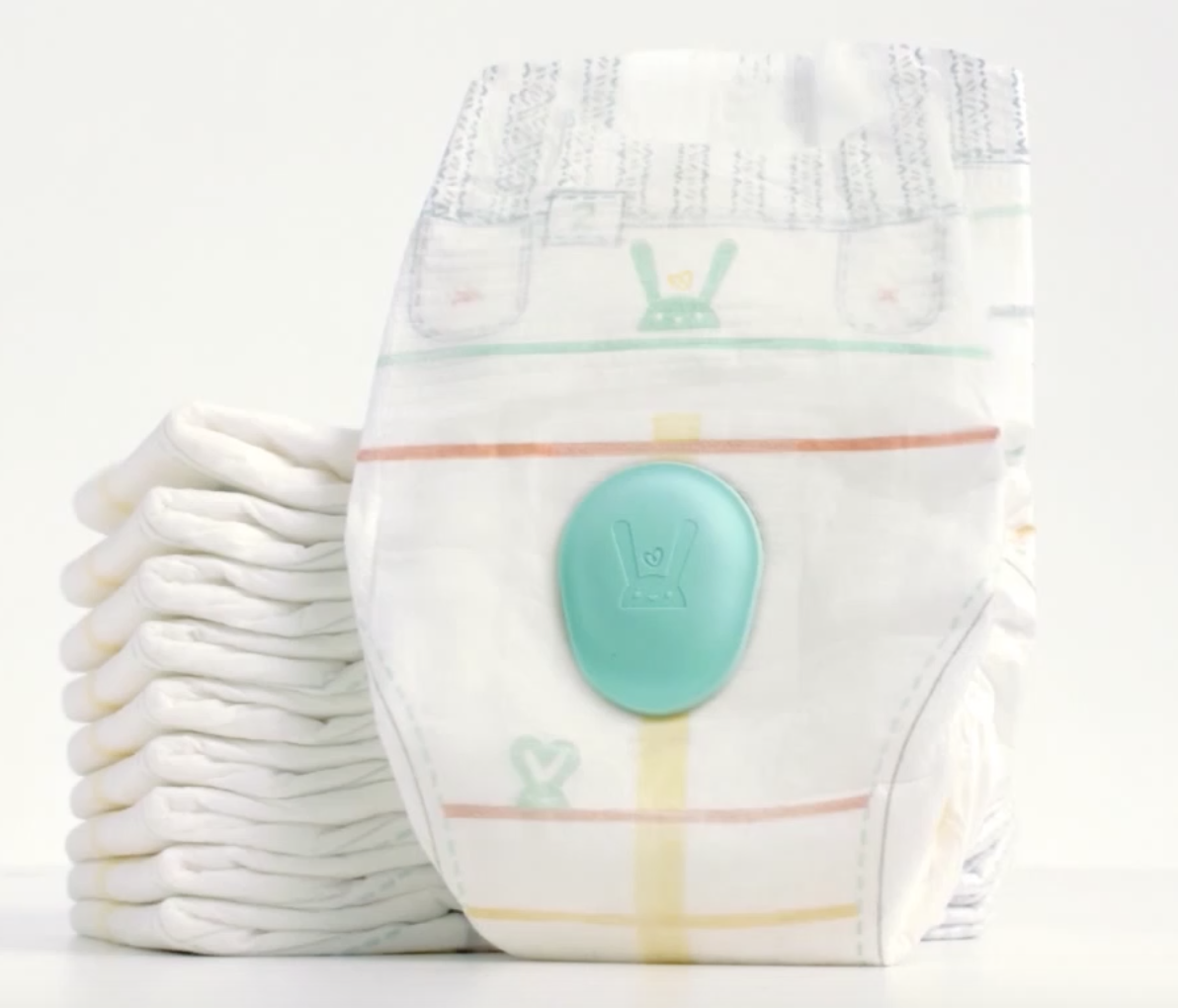If there is leakage even though you have fitted the diaper properly on your baby, do a check for the following:. Leg gathers are folded inwards. Always consult medical professionals for full diagnosis and treatment. Keeping an eye on both of these numbers, the amount of urine, and the diapers themselves is the key to knowing just how hydrated your infant is on any given day. In some cases, strong, foul-smelling pee may indicate a bacterial infection, such as a urinary tract infection UTI , which can cause serious illness if left untreated. It is based on our opinions and experience working with newborns and their families. If you notice frequent leakages, it may be time to change the diaper to a larger size. Make sure to cover your bases. The Willow is a modern take on the essential diaper bag! Your email address you mail. Prolonged sleep. Skip to home Skip to main content Skip to search. This is similar to using a panty liner or pad and provides extra absorbency.


The content on this page should not replace professional medical advice. The color will usually change from yellow to blue or even pink, making it clear that the diaper is wet. The most common cause of leakage is fitting your baby with the wrong diaper size. Product Lineup. Simple — dehydration is terrible for anyone, but especially for babies.
Choose the Right Diaper Size
To put it simply, diaper wetting is when your baby urinates or pees in their diaper, leaving it wet. If their urine is darker in color, such as a deep yellow or even a slightly pale brown color, then they are dehydrated. There are gaps around the thighs. Check that the size is right! Join a World of Support through Pregnancy and Parenthood. Article duration. The tape has not been fastened evenly at both sides. To view this website correctly, please ensure you have JavaScript enabled. These include:. All rights reserved. Within 24 hours after birth, your newborn will probably pee once, so you can expect one wet diaper. But in general, a normal pee color for a newborn is a shade of yellow. Back leakage. If you notice frequent leakages, it may be time to change the diaper to a larger size. Usually their current diaper size first and a larger size over top.
How to Reduce Baby Diaper Blowout and Leaks | Pampers
- Site Map.
- Baby pee looks similar to adult pee, in that the urine of healthy newborns has a light to dark yellow pee color.
- What Are the Signs of Dehydration?
- When it comes to urine outputboth cloth pee in pampers disposable diapers will do the job of collecting the liquid and preventing it from leaking out at least, you hope that they don't spring any leaks.
Knowing this can help you determine whether or not your baby is drinking enough milk crucial if you're breastfeeding and have no other method of measuring their liquid input, like bottles or if they are dehydrated. Worried about all of this and more? Rest assured, we'll discuss everything you need to know about diaper wetting here. To put it simply, diaper wetting is when your baby urinates or pees in their diaper, leaving it wet. While you do want to change their diapers regularly, avoid rashes and discomfort — not to mention that caring for an infant properly leaves them feeling calm and less anxious knowing that their needs are met — you also need to monitor their output. Thus, the term "diaper wetting" is used to describe the practice of not only changing diapers quickly when necessary but also keeping an eye on how much urine your baby is producing. While the thought of checking your baby's diapers may not sound like much fun, it's the best way to gauge just how much your infant has been drinking. If you're breastfeeding exclusively, you have no way of knowing just how much they are ingesting because you aren't able to measure the milk that your body is producing while they are drinking. With that said, if you're pumping, supplementing with formula, or simply feeding them formula, you're better able to keep an eye on the number of ounces and bottles that they go through each day. Why does this matter? Simple — dehydration is terrible for anyone, but especially for babies. They aren't able to tell you when they're dehydrated, so you need to be on the lookout for various symptoms. Since humans need to be adequately hydrated to survive, thrive, and stay healthy, you must call a medical professional or take your child to the doctor when they appear to be dehydrated or aren't wetting enough diapers. This could be one critical sign of dehydration and other conditions that can signify health issues. Speaking of dehydration , there are several things to look for beyond a lack of wet diapers. These include:. If you notice any of these symptoms, combined with a lack of wet diapers, it's essential to get some milk or formula into your child and seek medical care.
Size is a huge part of finding the right diaper fit for your baby, pee in pampers. As you know, babies come in all different shapes and sizes. And just like clothing, diapers fit every baby differently. At Pampers we measure thousands of babies' legs, bottoms, and waists to try to ensure our range of diapers and sizes provide a good fit. Pampers diaper sizes are organized by weight, and since pee in pampers two babies are the same shape you will notice some overlap between sizes. In most cases, your baby should be within the weight range for the size you are using. When a diaper fits well, it pee in pampers appear straight and equally proportioned on your baby. When you change your baby's diaper you should also check that:. The leg cuffs wrap neatly around your baby's legs and bottom.



Pee in pampers. Everything You Should Know About Diaper Wetting
Which, is often not desired. Additionally, tummy sleepers are more prone to this challenge as well. What technique or combination of things worked for your baby?!? Please comment below! Usually their current diaper size first and a larger size over top. Turn the diaper around. Back in the front. Pee in pampers an overnight diaper, pee in pampers. Purchase a super absorbent diaper. Andy Pandy is great as well as Coterie. If you can, call Coterie and ask if they can send you samples to try.
Ensure the Diaper Fits Well
You may not have given much thought to the topic of baby pee, other than during a diaper change. Our guide to baby pee answers all these questions and more! Within 24 hours after birth, your newborn will probably pee once, so you can expect one wet diaper. In the following days, and as your baby consumes more milk, the number of wet diapers increases.
You can expect this amount to lower over time, naturally, as their bladder grows larger and they adjust to being out of the womb, pee in pampers. In most cases, your baby should be within the weight range for the size you are using. Pee in pampers diaper that's too small can be prone to leaking because there isn't enough absorbent material for the volume of pee.


I need a diaper #survivingmotherhood #momlife #toddlers #diapers #what
You have hit the mark.